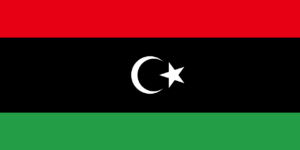History of Libya:
The Libyan coast was a favorite area for many of the great civilizations that arose around the Mediterranean. The first to arrive and establish settlements were the Phoenicians, later the Carthaginians. Greeks and Romans soon migrated and conquered the area. Great cities were built during this period, but the only remains of these cultures are the ruins they left behind.
Arabs conquered Libya in the 7th century AD. Most of the local population converted to Islam and learned the Arabic language and culture. In the mid-16th century, the Ottoman Turks invaded and Libya became part of the Ottoman Empire. They remained in power until Italy invaded in 1911 and Libya became an Italian colony.
In 1934, the Italian colony was named Libya. In the past, the Greeks called all of North Africa, excluding Egypt, Libya. Libya declared independence on December 24, 1951. King Idriss was the first king of Libya under the new government and constitutional monarchy. In 1959 Libya discovered large oil reserves. These reserves have made the country very rich. But people were unhappy that all the wealth went to a few elites. In 1969 Colonel Muammar Gaddafi led an uprising and took control of the government. Gaddafi did not hold an official title within the Libyan government, but he ruled Libya as supreme dictator until his death in 2011.
Information about Libya:
| Capital | Tripoli |
| Population | 6,902,021 (Source: 2023 worldometer) |
| Major Cities | Tripoli (capital), Khoms, Ajdabiya, Al Bayda, Benghazi, Misrata, Sirte District, Sabhā, Sirte |
| Borders | Mediterranean Sea to the north, Tunisia and Algeria to the west, Niger and Chad to the south, and Sudan and Egypt to the east |
| Gross Domestic Product (GDP) | $45,752,336,036 (2022 worldometer) |
| Currency | Libyan dinar (LYD) |
Flag of Libya:
Libya Economy Key Industries:
Libya Major Industries: petroleum, iron and steel, food processing, textiles, handicrafts, cement
Libya Agricultural Products: wheat, barley, olives, dates, citrus, vegetables, peanuts, soybeans; cattle
Libya Natural Resources: petroleum, natural gas, gypsum
Libya Major Exports: crude oil, refined petroleum products, natural gas
Libya Major Imports: machinery, transport equipment, semi-finished goods, food, consumer products
The Geography of Libya:
Total Size of Libya: 1.8 million km2 (source: wikipedia)
Geographical Low Point of Libya: Sabkhat Ghuzayyil -47 m
Geographical High Point of Libya: Bikku Bitti 2,267 m
Climate of Libya: Mediterranean along coast; dry, extreme desert interior
General Terrain of Libya: mostly barren, flat to undulating plains, plateaus, depressions
World Region or Continent of Libya: Africa
Geographical Coordinates: 25 00 N, 17 00 E
The People of Libya & Culture
Libya Government Type: Jamahiriya (a state of the masses) in theory, governed by the populace through local councils; in fact, a military dictatorship
Libya Nationality: Libyan(s)
Libya National Holiday: Revolution Day, 1 September (1969)
Libya Independence: 24 December 1951 (from UN trusteeship)
Libya National Symbol: star and crescent; hawk
Libya National Anthem or Song: Allahu Akbar (God Is Greatest)
Libya Languages Spoken: Arabic, Italian, English, all are widely understood in the major cities
Libya Religions: Sunni Muslim 97%
Interesting Facts about Libya:
Libya has the largest proven oil reserves in Africa. Libya’s oil reserves are the largest in Africa and the ninth largest in the world. In 2019, there were about 48 billion barrels. It is a particularly attractive oil region due to its low oil prices (about $1 a barrel), low sulfur content, and proximity to European markets. About 85% of Libya’s oil is exported to European countries.
Much of the central and eastern part of the country is covered by the Libyan desert. The Libyan desert is one of the sunniest and driest places on the planet. No average rainfall: the land can be without rain for decades and the highlands have no rain for 5 to 10 years.
To the north of the Jebel Uweinat mountain range, the Libyan plain is littered with eroded volcanic particles. The area also contains the Arkenu structure, once thought to be two asteroid impact craters.
In addition to the assessment of oil exports; Petrochemical, iron, aluminum and steel production make up 20% of Libya’s GDP.
Libya’s poor soil and climatic conditions severely limit the amount of food that can be grown in the country, so the country has to import about 75% of the food of its population.
The Libyan Dinar is the national currency.
Libya is home to the largest proven oil reserves on the African continent. It is a major contributor to the global supply of light, sweet crude.


